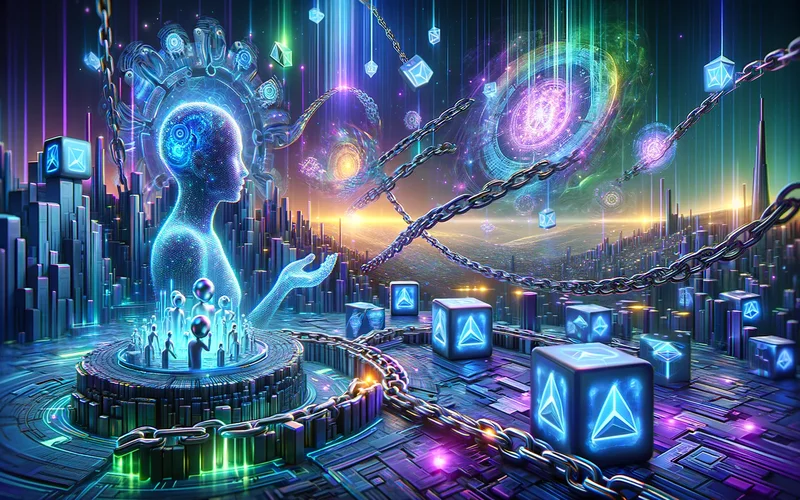Key Takeaways
- This collaboration aims to strike a balance between responsibility and innovation in the field of AI.
- Improved security: Blockchain enhances security, protecting AI systems and data from unauthorized access.
- Challenges arise due to blockchain’s governance issues, technical complexities, and limitations.
- Global standards and regulations are essential for effective governance and oversight.
- Integrating blockchain into AI regulation is important to promote responsible development and ensure a safe and ethical AI environment.
Partnership between blockchain and AI governance
The goal is to balance responsibility and innovation. AI can be very useful, but it can also be dangerous if not controlled. This is where blockchain’s stable accounts and transparent business help. This partnership is an important step toward better AI regulation and accountable norms.
Blockchain’s role in AI regulation is to focus on decentralization and stability. This improves transparency, security, and efficiency.
Key Benefits
Explore the benefits of integrating blockchain and AI.
- Increased security: Blockchain keeps AI systems and data safe from interference and unauthorized access.
- Transparency: The transparency of blockchain allows everyone to ensure that ethical standards are being followed.
- Decentralized Control: Decentralized control reduces the risk of power being concentrated in the wrong hands, creating a more democratic AI environment.
- Automated Compliance: Automated compliance makes regulatory processes smoother and less prone to errors.
- Adaptability: Blockchain’s adaptability allows regulation to keep up with all the latest technological developments.
What are the challenges?
Integration has some drawbacks. These are mostly governance issues, technical issues, and limitations of blockchain. Security and data privacy are always an issue as no platform, integrating the two, is 100% safe.
Enforcing regulations globally and navigating different jurisdictions is a completely different topic, with one of the most complexities being said. We will continue to follow this collaboration and see how it develops further.
Here are some real-world examples that show how cool it is to combine blockchain and AI in various fields: health care, finance and even smart cities. AI is not a shiny new toy, so integration with blockchain means we’ll see cool, cutting-edge technology and improved security. Moreover, global standards and regulations are needed to keep everything in check.
These aspects can be addressed if countries work together to set rules, encourage innovation and bridge digital distances.
Can blockchain and AI achieve the perfect balance?
Balancing innovation and control is no easy task, especially when dealing with AI, a vast platform with almost no limitations. But this is a team effort involving policymakers, researchers, technologists and ordinary people.
The rules to be enacted must foster innovation, adhere to ethical guidelines, and check values.
Making blockchain part of AI regulation isn’t just a good idea, it’s something we all need to get behind. It takes a diverse mix of skills and ideas to make this happen, but we have this!

